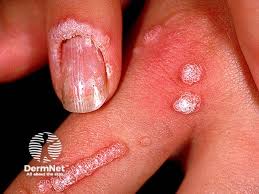Researchers have identified a promising new compound that inhibits cutaneous Human papillomaviruses or HPVs.
In lab studies, NSC51349 inhibited viral replication genes in cutaneous HPVs without damaging host cells.
“The inhibitor may represent a new class of HPV-specific antiviral drugs with significant potential,” says Molecular Virologist and Study Leader Alla Piirsoo, PhD, of the University of Tartu in Estonia, in a news release. “Unlike [HPV] vaccines, which rely on the functioning immune system our strategy could benefit people with compromised immunity who currently have very limited therapeutic options.”
Researchers have identified hundreds of different types of HPVs. Though most infections remain harmless and asymptomatic, infections from high-risk HPVs can lead to cervical cancer and head and neck cancers. Others can cause skin lesions including macule and warts, and when combined with other carcinogens can lead to non-melanoma skin cancer. Existing vaccines that target high-risk types of mucosal HPVs are widely available, but these vaccines are ineffective against cutaneous HPV types.
A treatment for cutaneous HPV could help a broad patient population, says Piirsoo. “Such a drug could be especially beneficial for immunocompromised individuals, such as organ transplant recipients, patients undergoing immunosuppressive cancer therapy, HIV-positive individuals, and people with rare genetic disorders.”
Piirsoo’s lab studies HPV replication and how it interacts with host cells, with a focus on identifying ways to inhibit viral activity that confers the least harm to the host. For the new work, the researchers used high-throughput screening to test more than 1,500 chemicals for their efficacy against HPV 5, a cutaneous type of HPV that primarily affects epithelial skin cells and has been associated with increased risk of skin cancer.
Focus on NSC51349
They narrowed in on NSC51349, which in further tests inhibited viral replication of HPV 5 in U2OS cells, osteosarcoma cells often used in cancer research. Further analyses showed that the compound also disabled transcription from the viral genome. Models suggested that the compound worked primarily through mechanisms present in cutaneous HPV types, but not in mucosal ones. The team identified a second small molecule that inhibited both mucosal and cutaneous HPV types, but the compound proved toxic to host cells.
Subsequent tests showed that NSC51349 also inhibited two additional cutaneous types, HPV8 and HPV38. “The compound may have broad-spectrum activity against multiple cutaneous HPV types without harming host cells,” Piirsoo says.
The researchers are now working to find the optimal concentration of the compound that inhibits viral replication without harming the host. They’re also planning animal testing, and “if the compound works in the animal model, it would be strong evidence that it could be developed into an effective antiviral treatment for HPVs,” Piirsoo says.
The study is published in the Journal of Virology.
PHOTO CREDIT: DermNet


